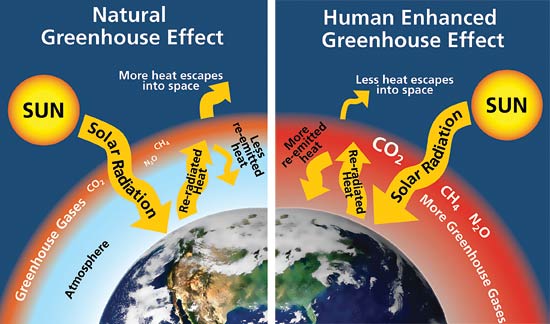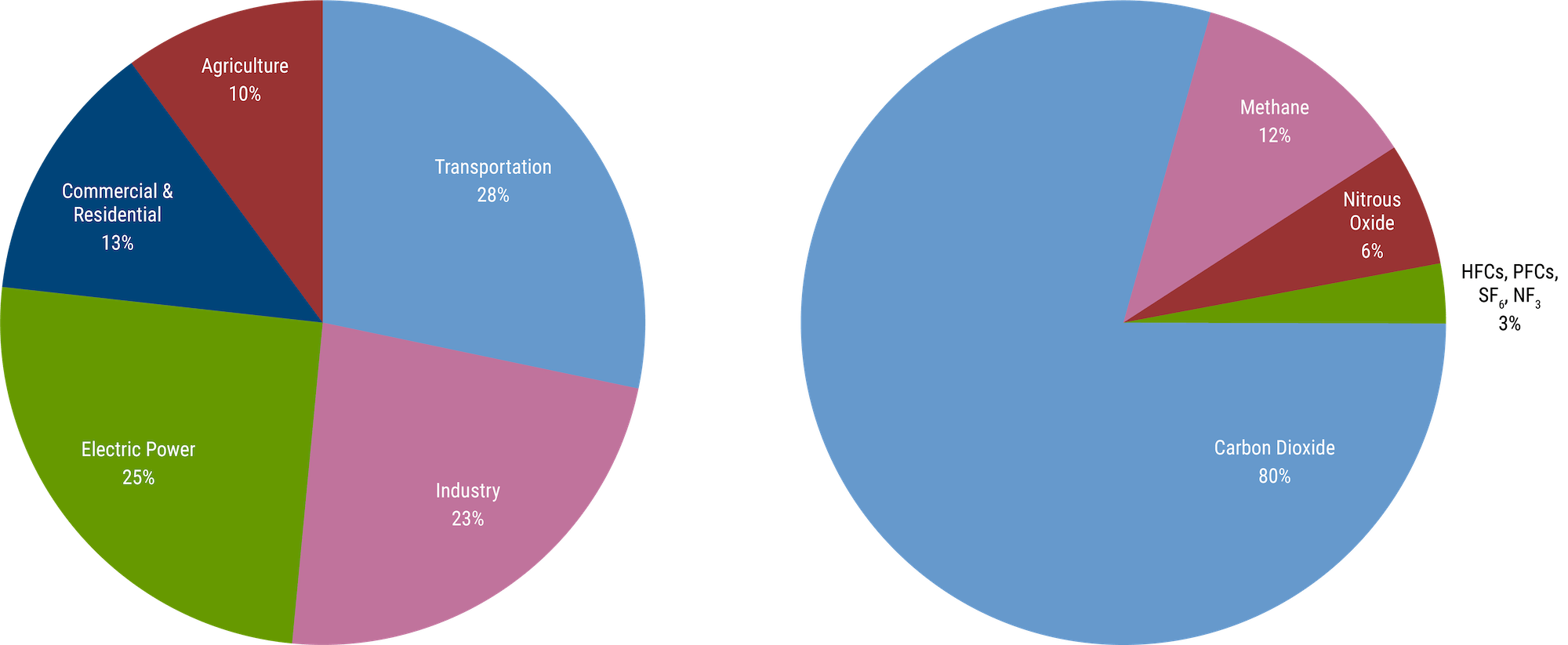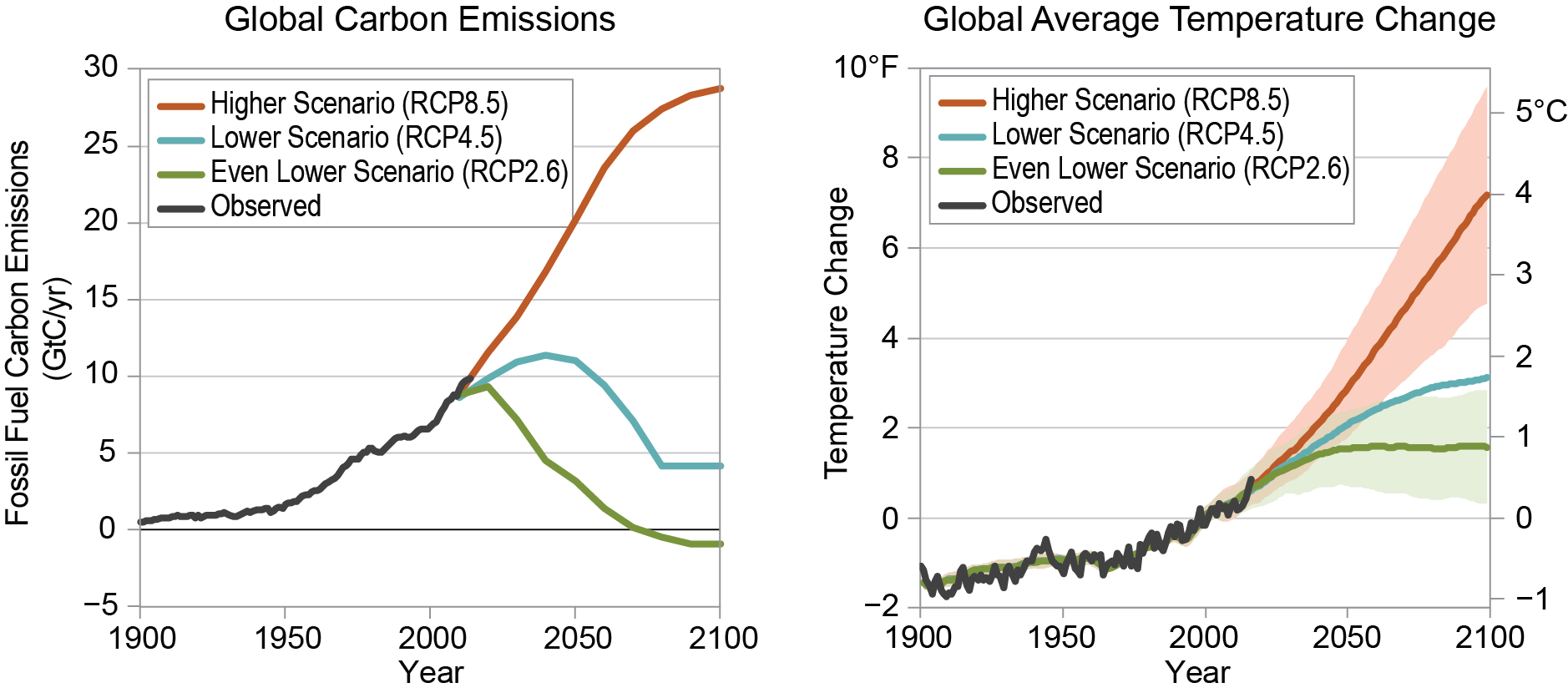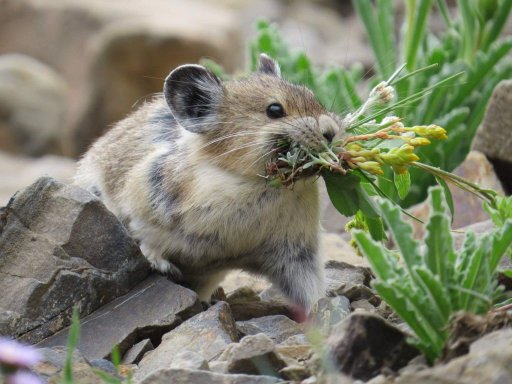

This page will help you understand the science behind climate change, the impacts of a changing climate, and how you can help slow climate change and prepare for it. We’ve also created a list of resources and activities for educators and students of all ages.
Science paints a clear picture: Climate change is happening; it is caused mostly by humans; and it creates many serious and damaging effects. The primary cause of climate change is human activities – like driving cars, creating electricity, and cutting down forests – not natural changes in the climate. These human activities release gases into the atmosphere called greenhouse gases , which slowly warm the planet, creating climate change.
The climate is very complex, and there are still some things we don’t know about it. But through centuries of studies and experiments, we’ve been able to create a strong understanding of how the system works, and how humans are changing it.
Imagine a greenhouse made of glass used to grow plants, like flowers and vegetables. The greenhouse keeps the plants inside warm even when it’s cold outside because it traps heat from the sun. The earth’s atmosphere acts like a greenhouse: When light from the sun passes through the atmosphere, some of it is absorbed by the Earth’s surface to heat it, but some heat is also trapped in our atmosphere by certain gases. These heat-trapping gases are called greenhouse gases, and they act like a blanket, keeping the earth warm. This greenhouse effect is a natural process that makes the planet comfortable to live.
But human activities are increasing the amount of greenhouse gases in our atmosphere. One type of greenhouse gas, carbon dioxide, has reached a level in our atmosphere that the Earth hasn’t seen for more than 400,000 years! Plants, soils, and the ocean can absorb carbon dioxide, but they can’t keep up with all the extra greenhouse gases that we have been releasing. And some greenhouse gases stay in the atmosphere for a long time, from hundreds to even thousands of years. All these gases are making things hotter than natural, so we need to stop producing them to avoid climate change.
Weather refers to the state of the atmosphere in a short period of time, like minutes or days. It includes lots of things we are familiar with, like temperature, humidity, precipitation, and wind speeds. The weather changes every day, but the climate is much more consistent because it measures the patterns of weather over long periods of time (at least several decades). Let’s say you were going to visit Florida for a few days in June. You would expect it to be hot and humid, because that’s what the climate of Florida is usually like in June. It might turn out to be hot during your trip, or it could rain or be cloudy. All of those are examples of possible weather during those days.

Up until about 150 years ago, humans did not produce many greenhouse gases. That changed as the human population grew, we cut down forests to make way for cities and farms, and important inventions and technology, like in-home electricity and cars, transformed the way we live.
These inventions and technologies need energy. Some types of energy called fossil fuels — like coal, oil, and natural gas — have become important sources of that energy. Burning fossil fuels releases carbon dioxide and other greenhouse gases into the atmosphere. We call the release of these gases emissions .
Today in the United States, electricity and transportation (cars, trucks, and planes) are responsible for almost 60 percent of greenhouse gas emissions. The rest comes from agriculture, industry – such as factories that make products we use – and from energy we use in our homes and businesses.
The most common types of greenhouse gases are:

In 2021, the United States emitted 6.3 billion metric tons of greenhouse gases (CO2e). Carbon dioxide accounted for the largest percentage of greenhouse gases (79%), followed by methane (13%), nitrous oxide (6%), and other greenhouse gases (3%). Total U.S. emissions for 2021 totaled 6,340 million metric tons of CO2e; net emissions, accounting for carbon sinks, totaled 5,586 million metric tons CO2e. Greenhouse gases are emitted by all sectors of the economy, including electric power (25% of total), transportation (28%), industry (23%), residential (6%), commercial (7%), and agriculture (10%).
Because of increases in greenhouse gas emissions, global temperatures are rising. Each of the past four decades has been warmer than the previous one. 2016 and 2020 were the warmest years on record, and the six warmest years have all been since 2010.
The following charts show how emissions and temperatures have gone up since 1900, and how they could continue to change in the future. If we continue to emit more and more greenhouse gases, the temperature of the Earth will rise a lot – maybe as much as 5 degrees Celsius (9 degrees Fahrenheit) by 2100. Even if we reduce our emissions right now, the temperature of the Earth will still rise slightly, but we might be able to keep the rise below 2 degrees Celsius (or about 4.8 degrees Fahrenheit). Two degrees might not sound like much, but scientists agree that even that small amount of warming can have large impacts on humans and the environment.

Rising global temperatures affect many things, like extreme weather, human health, food supply, and ecosystems. These impacts are already being felt today, and groups like the poor, elderly, and others are especially vulnerable.
Impacts of climate change include:

The American pika, a roughly potato-sized relative of the rabbit, is one of many animals feeling the impacts of climate change. The pika lives on mountains in cool areas, but warmer temperatures can push the pika to higher and higher altitudes, where it’s cooler. Eventually, they may run out of space.
Even though climate change sounds scary, we still have time to avoid some of the worst impacts. Everyone can play a part, including government, businesses, and you.
There are two main things we need to do:
The first is to reduce the greenhouse gas emissions responsible for climate change. By choosing cleaner ways to power our homes, offices, and cars, and being more efficient and less wasteful, we can produce fewer greenhouse gas emissions.
There are lot of things you can do to help, like turning off the lights when you leave a room to reduce the electricity you use, walking or biking where you can, or planting trees to absorb carbon dioxide. If you do any of these things, make sure you communicate with other people (like your family, teachers, and friends) about why you’re doing them! Communication can inspire more people to change their habits and help save the climate.
Look for more ideas on what we can do together and individually.
The second is to prepare for life in a changing climate. Even if we could stop creating greenhouse gases tomorrow, the climate would still change some because of our past emissions. So we need to make sure our buildings, roads, businesses, and communities are ready for the climate changes that we can’t avoid. This includes things like helping cities on the coast prepare for floods, preventing wildfires in our forests, and more.
Around the world, young people are learning about climate change and taking action. In fact, young people are some of the most important voices in the climate movement because you can inspire powerful people to create a better future for you.
You don’t have to be a rocket scientist or a politician to make a difference in the fight against climate change. Whatever your talents are, there’s a role for you to play. Some young people, like Greta Thunberg, Vanessa Nakate, and others, are leading the Fridays for Future movement to tell their governments to create strong policies to fight climate change. Other students are inventing new technologies to cut emissions and reduce waste. And others are using their creativity to bring awareness to climate change by writing music and creating art.
You can also look for ways to get involved in your community – maybe you can help your school set up a composting program to keep food waste out of the landfill. Maybe your synagogue or mosque needs help switching to energy efficient lights. Maybe you can write a letter to your local government to encourage your community to prepare for extreme weather or wildfires. Everyone can do something to fight climate change.
Check out our Educator Resources page for activities you can do to learn more about how climate change works and how you can be a part of the solution.
C2ES thanks the Alcoa Foundation for its support, which allowed us to develop our Climate Classroom content. As a fully independent organization, C2ES is solely responsible for its positions, programs, and publications.